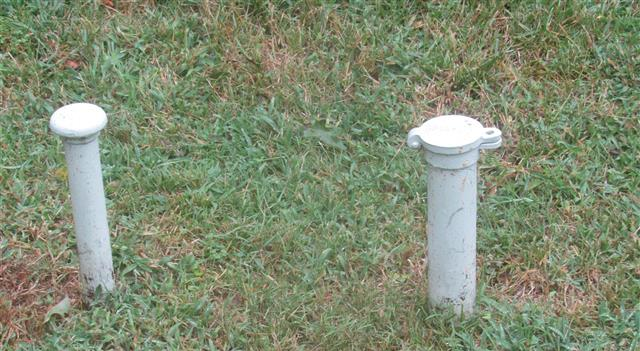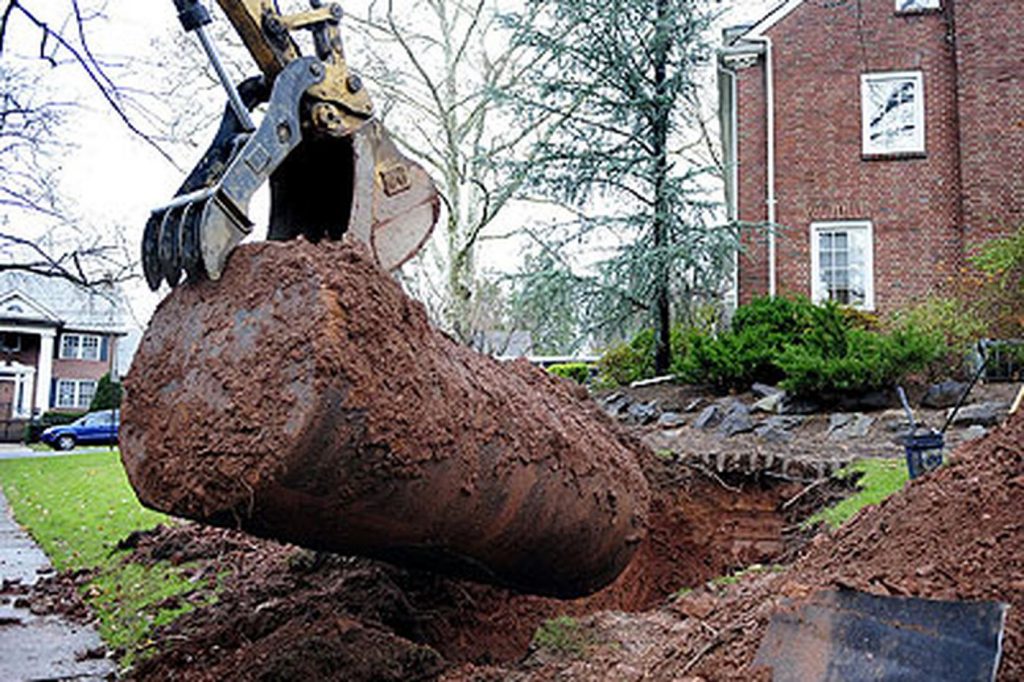Does your home have a buried heating oil tank? If so, you may consider having it removed at some point. Underground oil tanks could become an environmental hazard if they start to leak. In this post we’ll talk about signs that it’s time to remove and replace your inground heating oil tank.
How to Identify an Underground Heating Oil Tank
If you are new to heating oil, you’ll first want to understand the basics. Oil-heated homes will have a tank somewhere on the property to store heating oil. You will have to order heating oil and fill this tank periodically to maintain your fuel supply.
Tanks are most often above-ground – located in a basement, garage, crawl space, or just outside the house – but occasionally underground. Underground heating oil tanks gained popularity in the 60s, 70s, and 80s as they kept the giant heating oil tank out of sight. However, after many decades in the ground, some started to leak. The resulting environmental hazard led to the removal of these tanks starting in the 90s.
Very few houses built since the 1980s have underground heating oil tanks. Look for one or two pipes sticking out of the ground to identify a buried oil tank.

Reasons to Remove an Underground Heating Oil Tank
There are a variety of reasons that a heating oil tank should be removed. The most important reason is to prevent a leak. A leak can result in contaminated soil which could cost hundreds of thousands of dollars to remediate.
- The Tank is Over 30 Years Old: If your home has a buried heating oil tank and was built prior to 1990, then your tank is likely over 30 years old. After 30 years, the inner walls of the tank can start to corrode. After a while, the walls are too thin and oil can begin to leak out. While you can have the soil around the tank tested, it is not an easy process. If your tank is over 30 years old, consider having the tank removed or abandoned and replaced with an above ground tank. For assistance choosing a new heating oil tank, check out this post here.
- The Tank Is Leaking: Inspecting an underground oil tank is nearly impossible. Catch a leak by keeping close tabs on the amount of heating oil you are using. By tracking your usage, you can tell if you are suddenly going through more heating oil than expected. Track your heating oil usage by taking regular measurements of your tank level using a stick. Refer to a heating oil tank chart to record the level in the tank. Do this weekly to see how quickly the level is declining. Use this guide here for how much oil you should be expecting to burn if there is no leak. Another sign of a leak is your burner shutting down due to water in the oil lines. If the tank is taking in water, then it is likely the oil is also escaping the tank. This could result in an environmental catastrophe.
- You Plan on Selling Your Home Soon: Underground heating oil tanks can be a deal-breaker for a new homeowner. In fact, some banks will not mortgage a property with a buried oil tank due to the potential liability. Removing an oil tank and remediating soil are time-consuming and costly. Remove your tank ahead of the sale to eliminate this potential issue.

Replace Your Heating Oil Tank Before It Leaks
Remove your buried heating oil tank once it gets to the 30 year old mark. After three decades in the soil, it is hard to know the condition of the tank. Hire a reputable tank removal company to remove your buried oil tank. They will not only properly dispose of the old tank, but also test the soil around the tank. This will ensure the ground is not contaminated with oil
Install a new above ground heating oil tank – preferably inside the house. Indoor oil tanks are not subject to the elements and will last much longer than outdoor tanks. Then, all you have to worry about is ordering heating oil online and staying warm.
Happy heating,
Steve



